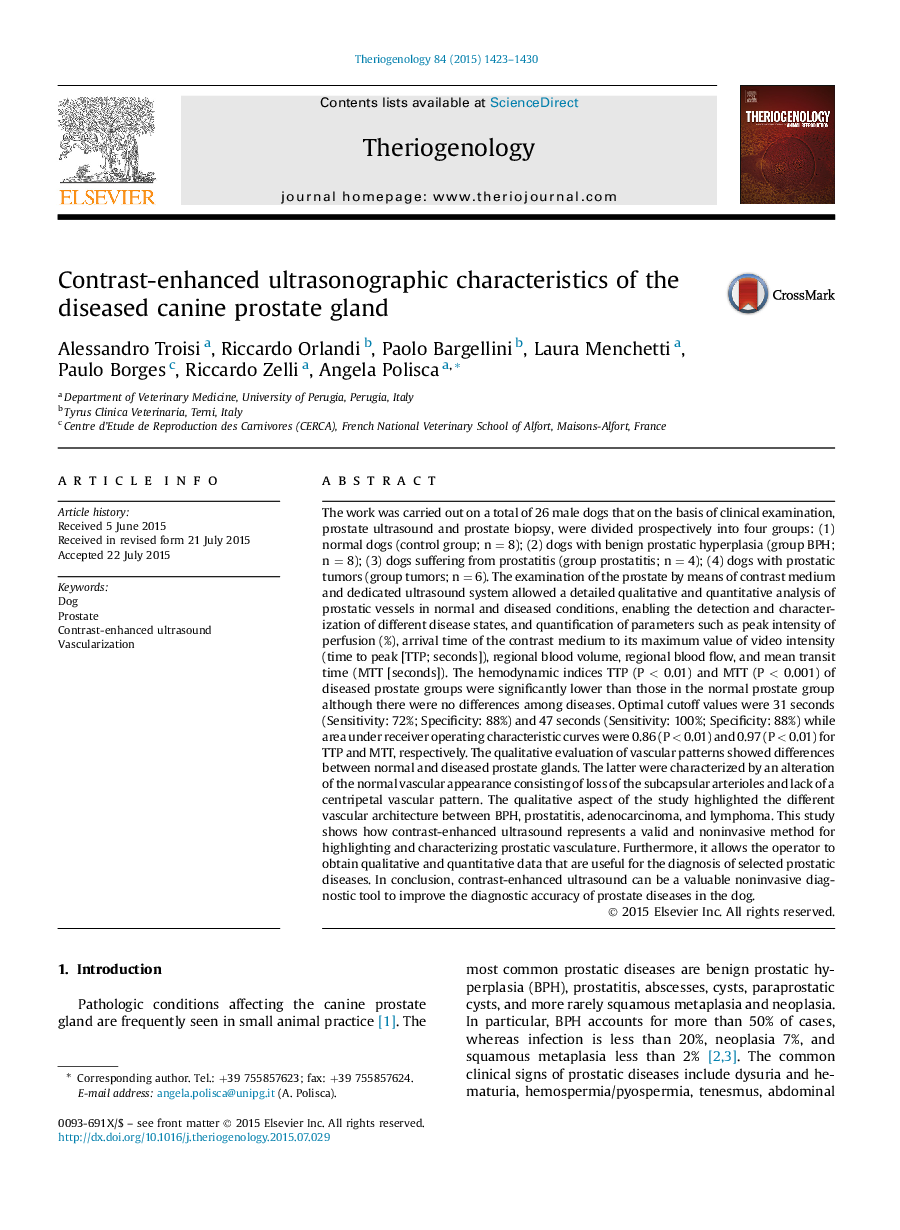| Article ID | Journal | Published Year | Pages | File Type |
|---|---|---|---|---|
| 2095023 | Theriogenology | 2015 | 8 Pages |
Abstract
The work was carried out on a total of 26 male dogs that on the basis of clinical examination, prostate ultrasound and prostate biopsy, were divided prospectively into four groups: (1) normal dogs (control group; n = 8); (2) dogs with benign prostatic hyperplasia (group BPH; n = 8); (3) dogs suffering from prostatitis (group prostatitis; n = 4); (4) dogs with prostatic tumors (group tumors; n = 6). The examination of the prostate by means of contrast medium and dedicated ultrasound system allowed a detailed qualitative and quantitative analysis of prostatic vessels in normal and diseased conditions, enabling the detection and characterization of different disease states, and quantification of parameters such as peak intensity of perfusion (%), arrival time of the contrast medium to its maximum value of video intensity (time to peak [TTP; seconds]), regional blood volume, regional blood flow, and mean transit time (MTT [seconds]). The hemodynamic indices TTP (P < 0.01) and MTT (P < 0.001) of diseased prostate groups were significantly lower than those in the normal prostate group although there were no differences among diseases. Optimal cutoff values were 31 seconds (Sensitivity: 72%; Specificity: 88%) and 47 seconds (Sensitivity: 100%; Specificity: 88%) while area under receiver operating characteristic curves were 0.86 (P < 0.01) and 0.97 (P < 0.01) for TTP and MTT, respectively. The qualitative evaluation of vascular patterns showed differences between normal and diseased prostate glands. The latter were characterized by an alteration of the normal vascular appearance consisting of loss of the subcapsular arterioles and lack of a centripetal vascular pattern. The qualitative aspect of the study highlighted the different vascular architecture between BPH, prostatitis, adenocarcinoma, and lymphoma. This study shows how contrast-enhanced ultrasound represents a valid and noninvasive method for highlighting and characterizing prostatic vasculature. Furthermore, it allows the operator to obtain qualitative and quantitative data that are useful for the diagnosis of selected prostatic diseases. In conclusion, contrast-enhanced ultrasound can be a valuable noninvasive diagnostic tool to improve the diagnostic accuracy of prostate diseases in the dog.
Related Topics
Life Sciences
Agricultural and Biological Sciences
Animal Science and Zoology
Authors
Alessandro Troisi, Riccardo Orlandi, Paolo Bargellini, Laura Menchetti, Paulo Borges, Riccardo Zelli, Angela Polisca,
